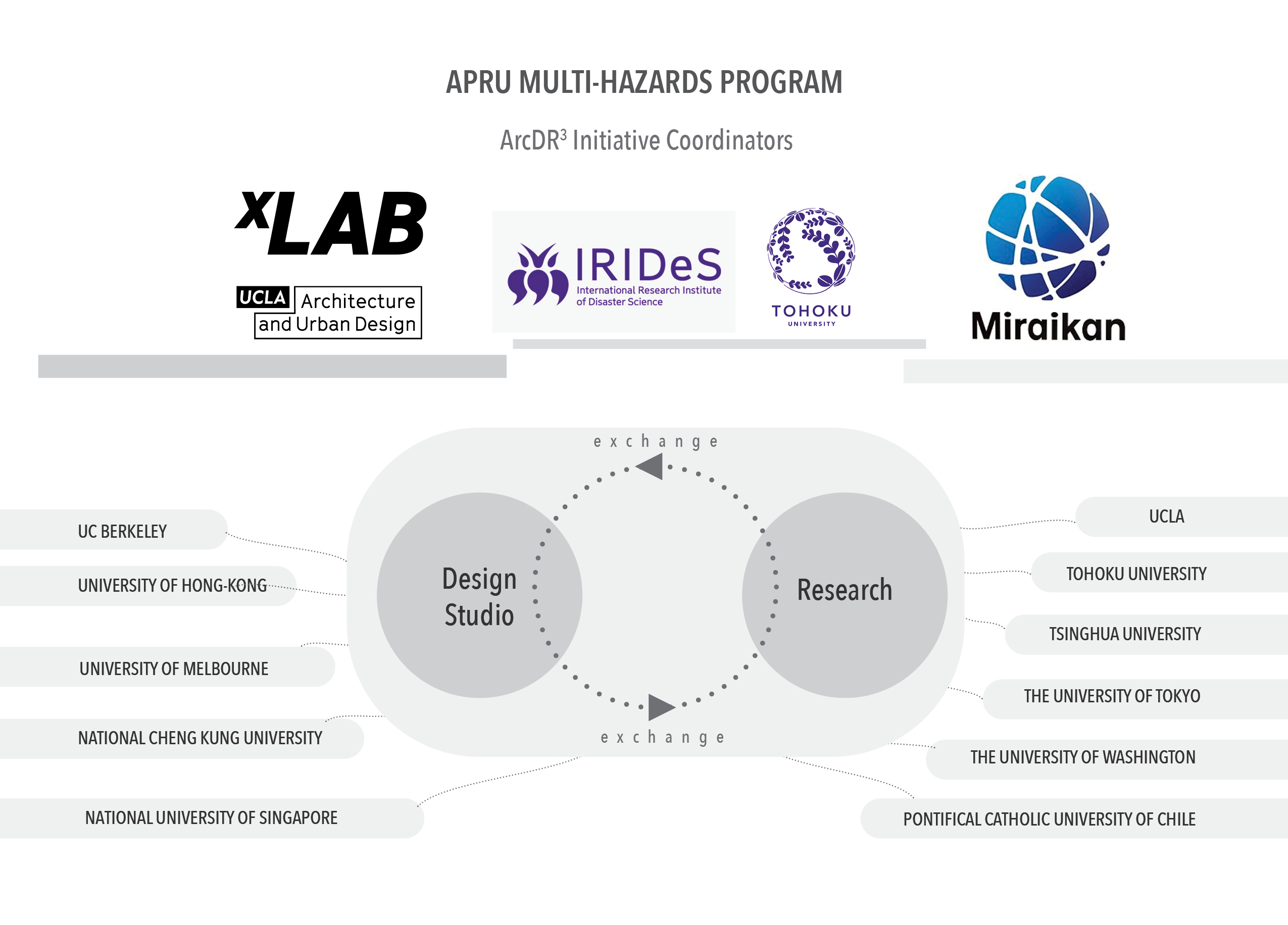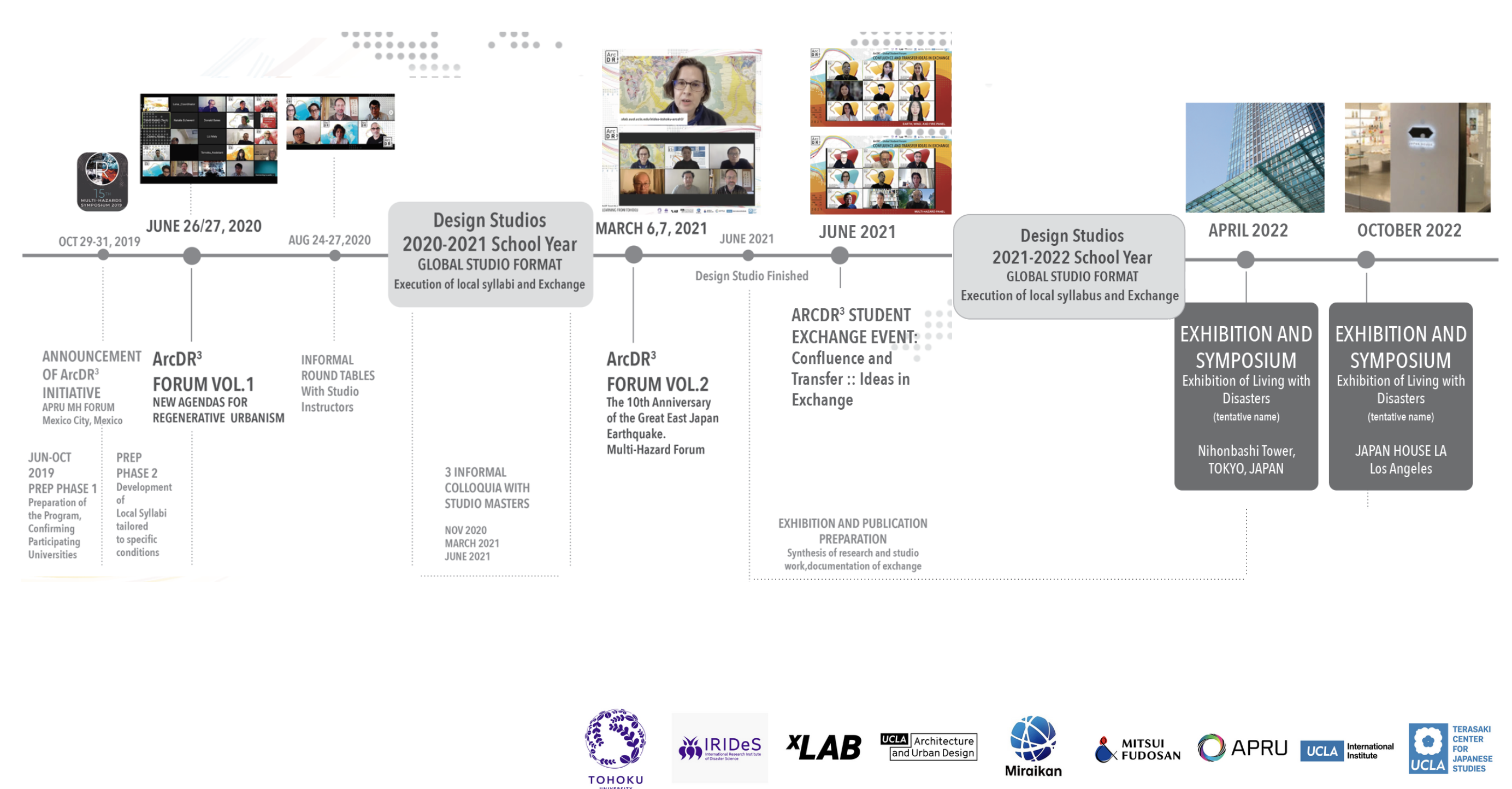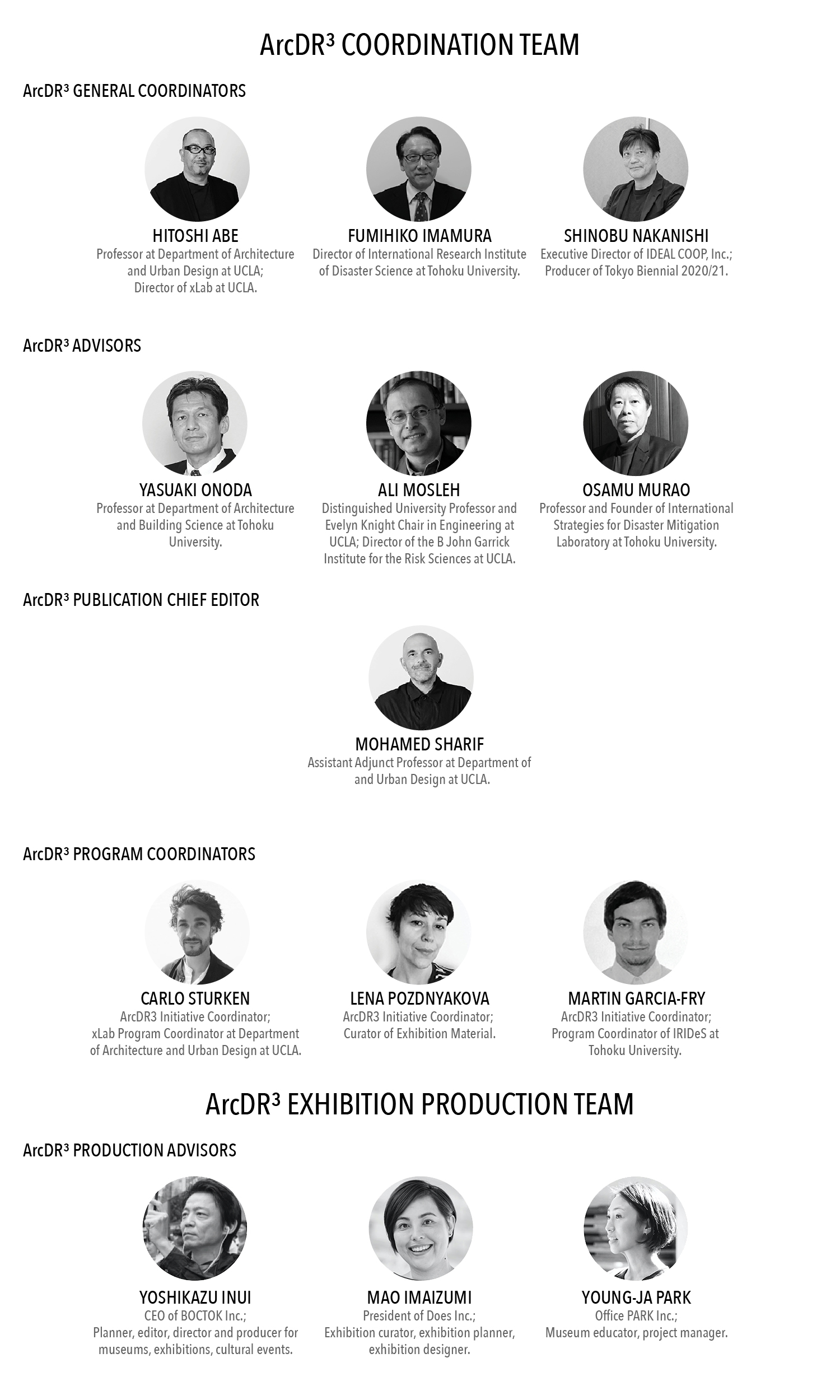The history of humanity reflects a myriad of examples of survival in the face of natural and man-made disasters. Across the globe, 21st century cities face a growing number of technological, social and environmental challenges. The increased intensity of global risk establishes an urgency to define new strategies for designing buildings, cities and environments. Over many years scientists, engineers and scholars of such events have accumulated much knowledge to help elucidate disaster-related phenomena, structures, and systems. However, there are limited scenarios in which experts find the opportunity to apply this knowledge at a large scale in the field of reconstruction or construction that anticipates future events. To bridge such gaps the xLAB at UCLA Architecture and Urban Design, in partnership with IRIDeS at Tohoku University in Japan, and Miraikan – The National Museum of Emerging Science and Innovation in Japan, have established the ArcDR³ Initiative as a part of the APRU Multi-Hazards Program.
ArcDR³ (Architecture and Urban Design for Disaster Risk Reduction and Resilience) is a global initiative that has invited 11 major universities from regions with recurring risks of natural disasters to participate by engaging in a collaborative research studio that pursues new strategies for risk-resilient environments across the Pacific Rim. By establishing an international platform for the production and exchange of knowledge on environmental design that reduces the risk of recurring disasters and enhances resilience, ArcDR3 aims to create a more effective integration of theory/research and practice/design.
Participating Universities include UC Berkeley (USA), University of Hong Kong (Hong Kong), University of Melbourne (Australia), National Cheng Kung University (Taiwan), National University of Singapore (Singapore), Pontifical Catholic University of Chile (Chile), University of Tokyo (Japan), Tohoku University (Japan), Tsinghua University (China), University of Washington (USA) and UCLA (USA).

The ArcDR³ Initiative takes its inspiration from the Sendai Framework seeking to propel it forward using a collaborative approach to architectural education to demonstrate visionary design possibilities. The goal of the initiative is to contribute to cutting edge design thinking towards the development of an international standard for risk reduction in the urban environment. At the conclusion of this initiative, ideas formulated by participating universities will be shared with the Japanese Ministry of Economy, Trade and Industry with a view towards establishing the content for a new disaster risk reduction certification for the International Organization for Standardization (ISO).
One of the objectives of the ArcDR³ Initiative is to develop this conceptual approach that sets a foundation for the development of alternative sustainable regenerative design models for the future and enables urban designers to prepare for the complexities of the changing urban environment.
Regenerative Urbanism is envisioned to address these unprecedented changes through an adaptive systems approach with the focus on regenerative and evolutionary design and development strategies for ecologically, sociologically, and technologically resilient cities. It expands the notion of resilience and implements an alternative complex form of adaptability, where resilient design responds and adapts to change, whether a sudden shock or a long-term trend through the establishment of ERS (Evolutionary Regenerative System).
As a platform, the joint initiative draws from an international network of professional and educational partners. To this end, the experimental educational project will share, store and utilize ideas created and implemented by participating universities under the umbrella of ArcDR3 Grand Syllabus to be adopted and modified by each participating institution in its local context.
With a holistic goal in mind, ArcDR³ participants will design ERS for risk and resilience through one or a combination of the following lenses:
> Technology: Resilient, threat-resistant systems are characterized by suppleness, flexibility, and redundancy by interfacing with a changing array of objects, populations, and environmental situations.
> Society: Urban systems that mitigate challenges and maximize opportunities created by shifts in the global population must pay particular attention to dynamic environments that can accommodate the diverse changes present in the near future.
>Ecology: A resilient urban ecology enables multiple types of ecosystems to coexist and interface with each other. How can local considerations contribute greater to a global risk management system?
The challenge to participating teams is to realize bold, interdisciplinarily conceived urban design proposals that smartly tackle ‘Local and National Level’ key points identified in two of the 4 Priorities for Action for Disaster Risk Reduction laid out in the Sendai Framework (Sendai Framework Priorities 1 and 2, Priorities 3 and 4).
Participating teams will demonstrate ideas at 2 scales of urban design: systematically, or in a form of large-scale network, and prototypically–at the scale of a smaller node in the network in the form of a constructed environment.
Culminating studio projects will be discussed in upcoming conferences, displayed in exhibitions, and compiled into a publication for public distribution.

